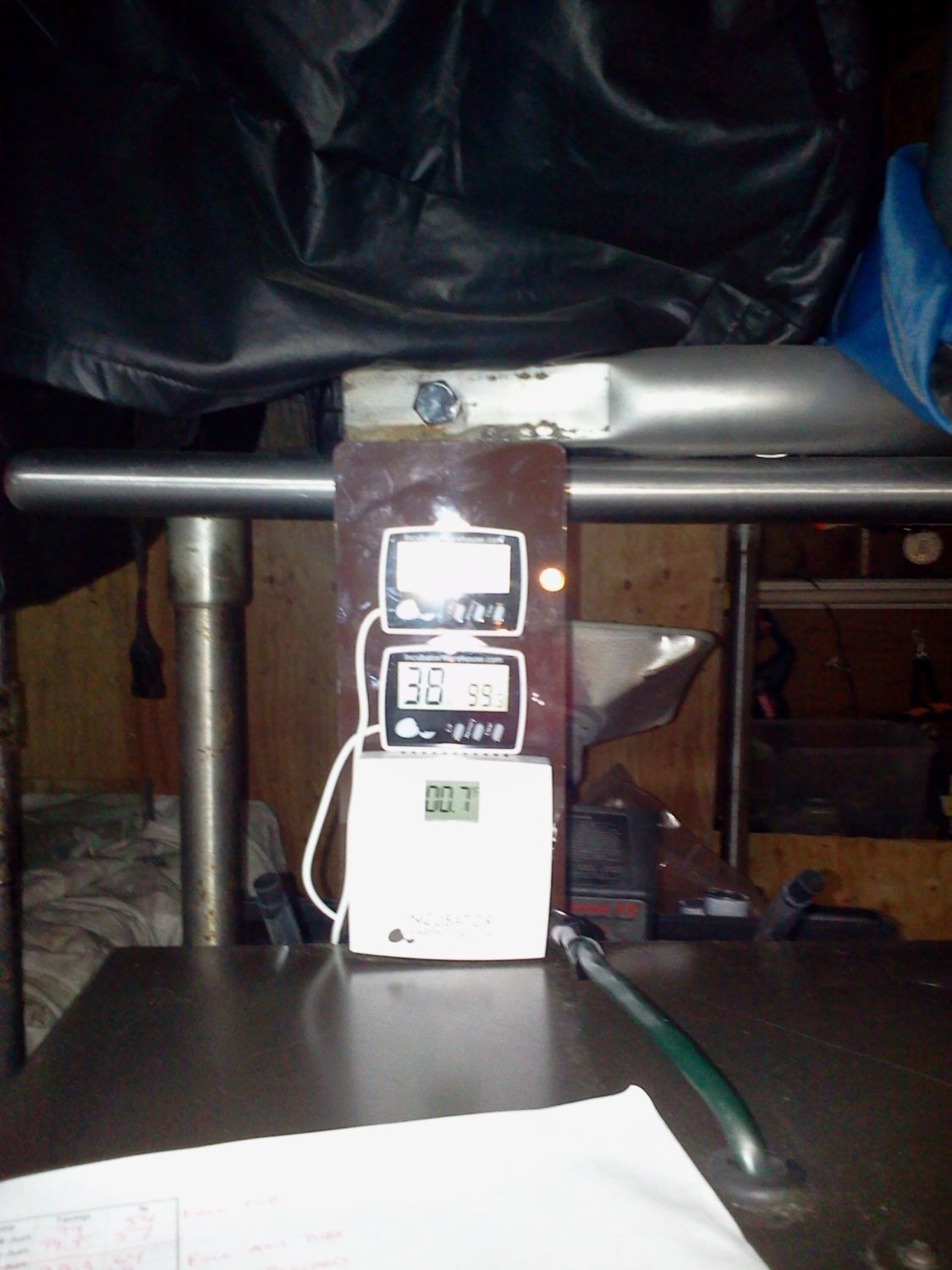- Jan 30, 2012
- 22
- 0
- 24
That is so super cool!!! I totally think I could build something like that. And it looks so much prettier that just a styrofoam box!  Good job!
Good job!
 Good job!
Good job!Follow along with the video below to see how to install our site as a web app on your home screen.
Note: This feature may not be available in some browsers.
 Good job!
Good job!I used a non-working console TV skeleton for my foundation. 1/4" tempered glass for the front, 1/4" insulation sheets wrapped in tablecloth for the inside walls, half of an interior door packed with insulation for the back door which is hinged on one side and closes with pressure latches on the other. I added a piece of tubing leading form outside the bator down into the water reservoir so I can add water without opening the bator door. There is heat tape lining the bottom and 2 100 watt light bulbs as supplemental heat. The light bulbs are wired to one another and then to a dimmer switch which I have had good luck with. I will, however, be adding a thermostat for next hatching season. There is a small personal fan next to the light bulbs. I have 2 large bricks in the bottom along with 2 large bottles of water as heat sinks.


My husband and I ventured into DIY Incubator territory when we received 2 Khaki Campbell eggs that were incubated most of the way. We were told that we could finish their incubation with a heat lamp but my husband and I were really unsatisfied with the temperature fluctuations. We ended up throwing together an incubator out of some cheap cull lumber from home depot; using the bulb, water heater thermostat, and cpu fan combo. One egg didn't make it but the other survived, despite coming from a cracked egg (we had to band-aid it together).
We dubbed the duckling Baby (creative, I know) and the incubator Egg Box 360. Here are some pics -



I like how your incubator looks!
I wanted to ask about your temperatures though? Are they where you want them to be? I would like to help you!
Thank you, it is a lot more pleasing to the eye than I had originally planned. I tried to find an old ice chest first but no thrift/second hand stores had any, so I went with the cull lumber. We did a box within a box so that the wiring wouldn't be exposed to the eggs/chicks or the exterior of the incubator. The internal configuration of the light and the thermostat are actually a bit different than pictured. We had to adjust the two closer together to have it cycle on and off quickly enough to maintain a steady temperature. The light is now on a bendable arm and the thermostat's back faces outward toward the light. Initially this made adjusting the thermostat's dial difficult, having to unscrew it from the wall every time we needed to change it. We solved that problem by adding a capped hole in the incubator's walls so that it was easy to adjust the dial with a screw driver without lifting the lid and unscrewing the thermostat from the box.
Before we made all of these adjustments the temperature cycle was erratic at best, with an inconsistent 10 minute cycle between on and off, with a difference of 6-8 degrees between (not acceptable). After the changes we have managed to keep target temperatures perfectly, with on/off cycling at 30 seconds.
I appreciate your offer very much and should anything go wrong (again) I will ask your advice. It took a lot of trial and error to get it to work as it is now. When we first built it we were very worried that something had been left out of the how to-s, everyone else's DIY incubator seemed to be running on some voodoo that ours didn't possess. The biggest key in the end it seemed was the proximity of the light to the waterheater's waifer and a heat sink (a large jar of water in this case) directly underneath the thermostat.